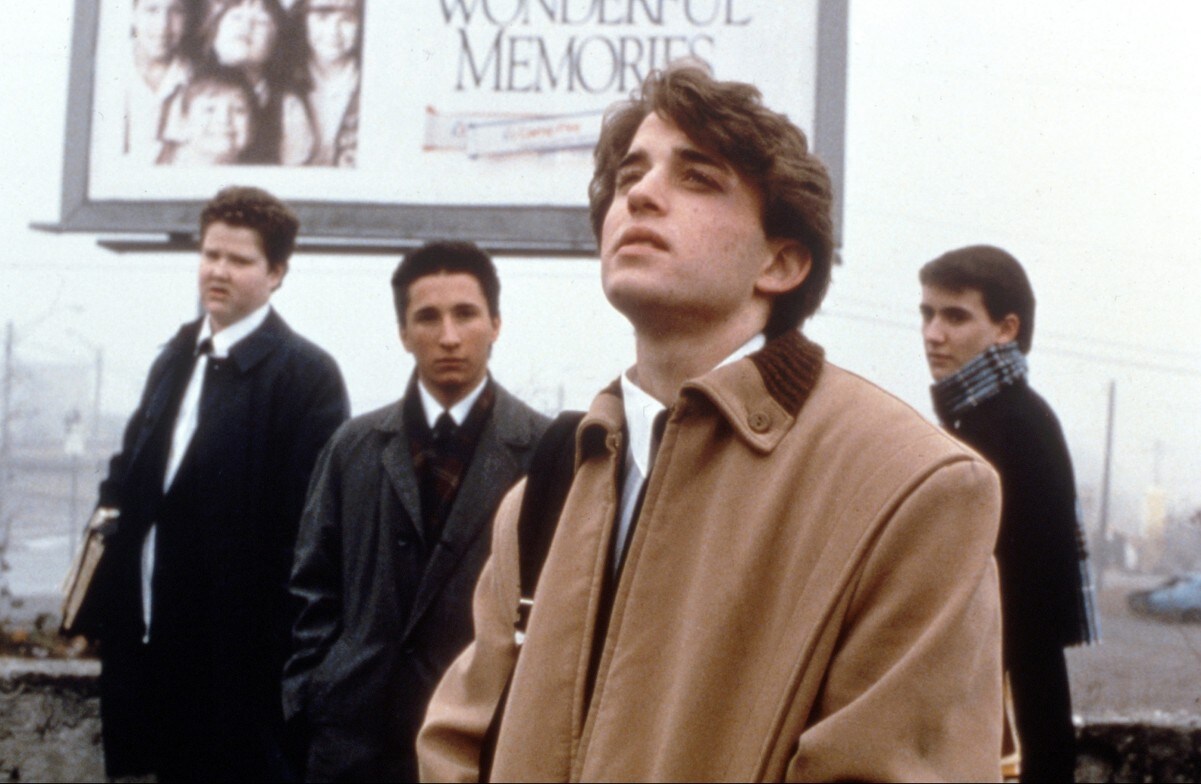Citizen Saint

Cast & Crew
Harold Young
Rev. E. V. Dailey
Carla Dare
Jed Prouty
Loraine Mae Martin
Walter Butterworth
Film Details
Technical Specs

Synopsis
During the late 1850s, in Italy, the devout young Francesca "Cecchina" Cabrini, dreams of becoming a missionary. Cecchina eventually joins a Catholic religious order and is initiated as a novice. When she reaches adulthood, the young nun demonstrates her organizing abilities and forms the Order of the Missionary Sisters of the Sacred Heart. She is then assigned to duties in America. There, Mother Cabrini, as she is now called, is made the head of the New York State orphanage in New York City. Her devotion to the oppressed and the sick leads her to found sixty-seven hospitals, as well as numerous orphanages, clinics and schools around the United States and Latin America. During her life, Mother Cabrini performs three miracles: she brings Sister Delfini back from the dead, restores the sight of a blind infant, and helps singer Dorine to regain her lost voice. She also intercedes on behalf of a condemned murderer at Sing Sing Prison, saving him from execution. In 1917, at the age of 67, Mother Cabrini dies of malaria in a Chicago hospital. In 1946, she is canonized in Vatican City, and is heralded as the first American to attain sainthood.

Director
Harold Young
Cast
Rev. E. V. Dailey
Carla Dare
Jed Prouty
Loraine Mae Martin
Walter Butterworth
Robin Morgan
Maurice Cavell
William Harrigan
June Harrison
Lucille Fenton
Lauretta Campeau
June Dufrayne

Julie Haydon
Clifford Sales
Mary Lee Dearring
Patty Foster
Ralph Simone
William Sharon
Clark Williams
Del Casino
Diana Kemble
Eole Gambarelli
Marie Caruso
Donna Moore
John Graham
Douglas Rutherford
Ann Irish

Loring Smith
Boris Aplon
George Kluge
Joy Bannister
Ruth Moore
Kurt Kupfer
Alma Du Bus
Richard Good
Crew
Leonard Anderson
Rev. E. V. Dailey
Clyde Elliott
Clyde Elliott
Richard Kleepfer
Richard Klopfer
Harold Lewis
Don Malkames
Rev. Cletus Mccarthy
Arthur A. Norris
Arthur A. Norris
Harold Orlob
Harold Orlob
Max Richard
Fred Ryle
Kenneth Upton

Film Details
Technical Specs

Quotes
Trivia
Notes
The film's billing sheet, contained in copyright records, includes the following acknowledgment: "With appreciation to Theodore Maynard for use of quotations from his book 'Too Small a World; A Biography of Mother Cabrini.'" Maynard's book was published in Milwaukee in 1945. According to reviews, the film, described as a "semi-documentary," opens and closes with newsreel footage showing Cabrini's canonization by Pope Pius XII in Vatican City. Available descriptions of the picture's narrative are sketchy. A synopsis contained in copyright records states that the story is "told largely by way of artful flashback method, posed against the background of a typical, present-day American family." According to modern biographical sources, Cabrini, who was born in the Lombardy region of Italy in 1850, became a nun in 1877. During the 1880s, she opened seven orphanages in northern Italy as part of her Missionary Sisters of the Sacred Heart order. In 1889, Cabrini and a small group of sisters went to New York City and began working among poor Italian immigrants there. As noted above, she then expanded her efforts around the country and established bases in Chile and Argentina, founding more than sixty convents under her Sacred Heart order. In 1909, Cabrini became a naturalized American citizen. She was beatified in 1938 and canonized in 1946; her feast day is celebrated on 13 November. Many of the institutions she established are still in existence today. As noted in a Hollywood Reporter news item, two of the beneficiaries of Mother Cabrini's miracles, including a private in the U.S. Army, were still alive at the time this film was made.
According to Hollywood Reporter news items, in 1944, both PRC Productions and Bing Crosby Productions had "Mother Cabrini" projects in the works. PRC's film, titled Mother Cabrini, was to be produced by Leon Fromkess and Martin Mooney and directed by Edgar Ulmer, however that film was never made. In September 1944, Bing Crosby Productions announced that it was dropping its Mother Cabrini project. PRC's version was apparently also dropped before shooting began. The New York Times review of Citizen Saint notes that William Harrigan, who plays "Father Vail" in the picture, narrates part of the story. It is not known if Rev. E. V. Dailey's and Rev. Cletus McCarthy's narration credits are for writing and/or speaking. According to the New York Times review, the cast of the film, which was shot at RKO's Harlem studios, was comprised primarily of New York-based actors. The New York Times review also noted that producer Clyde Elliott also distributed the Italian-made film The Life and Miracles of Blessed Mother Cabrini. The January 28, 1948 Los Angeles premiere of Citizen Saint benefitted the Villa Cabrini Blood Bank of Burbank, according to Los Angeles Examiner. The film was reviewed twice by The Exhibitor, once in May 1947 and again in June 1948. According to the June 1948 review, three minutes were added to the running time after some "changes and editing" were made to the film.












